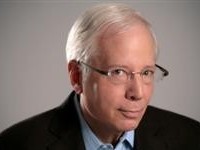 The past 18 months or so have not been very kind to Wall Street insiders and hedge fund managers.
The past 18 months or so have not been very kind to Wall Street insiders and hedge fund managers.
These investment gurus almost caused a worldwide economic collapse. Many of them are now out of business.
Hedge funds have been hit particularly hard. At last count, 114 hedge funds from 69 fund families have imploded.
How have followers of a boring buy and hold index funds strategy fared?
When I wrote in 2006, I warned investors about the perils of stock picking, market timing, and actively managed mutual funds. I told them to stay away from brokers and advisors who engaged in these practices, which includes 95 percent of them.
Instead, I advised investors to simply capture market returns using low-cost index funds. I told them exactly how to do it, without using any broker or advisor. Here are the three simple steps to follow:
1. Determine your asset allocation by taking an asset allocation questionnaire. Many are available for free on personal finance websites and I have one on my site you can use (see SmartestInvestmentBook.com).
2. Buy three low-cost index funds directly from Vanguard (used in this example, but you can choose similar funds from other fund families):
The Total Stock Market Index Fund (VTSMX). Put 70 percent of the amount allocated to equities in this fund.
The Total International Stock Index Fund (VGTSX). Put 30 percent of the amount allocated to equities in this fund.
The Total Bond Index Fund (VBMFX). Put 100 percent of the amount allocated to bonds in this fund.
3. Rebalance your portfolio once or twice a year to keep your asset allocation intact or to change it if your investment objectives or tolerance for risk changed.
Brokers ridiculed my advice. They said they could “beat the markets.” They derided index funds as fine for “novice investors” who didn’t have the time to “study the markets” and, presumably, use their services.
I computed the returns of a 60 percent (stocks) and 40 percent (bonds) portfolio invested in the three Vanguard funds noted above. I ran the numbers from January 1, 2008, through May 8, 2009. This was a terrible time for the markets, as everyone knows.
I used a 60/40 asset allocation since that is the asset allocation used by most pensions and endowments. Here’s the result:
A loss of 18.50 percent.
No implosions here.
The unusual market volatility we have experienced has brought out the worst in the financial media and in brokers and advisors. Cramer is still saying that he can tell you when to get in and out of the markets and that he can pick stock winners.
The data tells a far different story. According to CXO Advisory, Cramer’s stock picks are right only 46 percent of the time, which is less than you would expect from throwing a dart at a list of stocks.
Other self-styled experts freely give advice about market timing and asset class selection. How many times have you heard that you should “flee to safety” or that now is the time to “buy gold”? My personal favorite is “buy and hold is dead.”
I am not suggesting that there is just one way to invest. However, there is only one way to invest.
It is the holy grail of investing.
The Smartest Investment Book You’ll Ever Read The Smartest 401(k) Book You’ll Ever Read. The Smartest Retirement Book You’ll Ever Read,


Leave a Reply